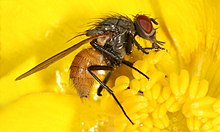
Helina is a very large genus from the fly family Muscidae.

Pegomya is a genus of flies within the family Anthomyiidae. Some species are considered pests due to their leafmining larvae. Species include:

Fannia is a very large genus of approximately 288 species of flies. The genus was originally described by the French entomologist Jean-Baptiste Robineau-Desvoidy in 1830. A number of species were formerly placed in the genus Musca.
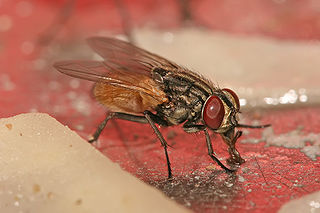
Muscini is a Tribe of flies from the family Muscidae.

Phaonia is a very large genus from the fly family Muscidae. It is distributed worldwide, with more than 750 species having been described.

Lophosceles is a small genus from the fly family Muscidae.

Thricops semicinereus is a species of fly which is widely distribution across the Palaearctic.
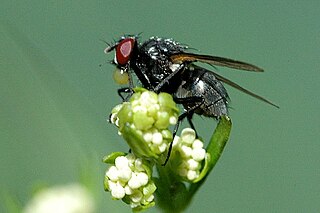
Hydrotaea is a genus of insects in the housefly family, Muscidae. They occur in most regions of the world but are more populous in warmer climates. They are often found on feces in summer months, and are therefore generally found in close proximity to livestock. Among the 130 known species in this genus, one of the most commonly recognized is the dump fly.

Eudasyphora is a large genus from the fly family Muscidae.

Azeliini is a tribe of flies from the family Muscidae.
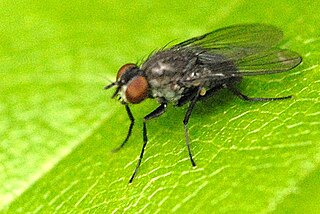
Coenosiini is a tribe of flies from the family Muscidae.

Coenosia is a very large genus of true flies of the family Muscidae. Coenosia are known as tiger flies since they are predators and hunt many kinds of insects and other invertebrates.

Phaonia siebecki is a species of fly which is distributed across parts the Palaearctic.
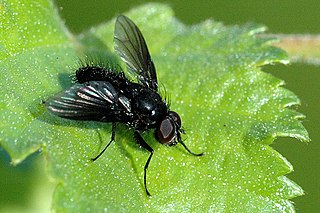
Spilogona is a very large genus of flies from the family Muscidae.

Mydaea is a large genus from the fly family Muscidae.

Lispocephala is a very large genus of true flies of the family Muscidae.

Phaonia incana is a fly from the family Muscidae. It is found in the Palearctic.
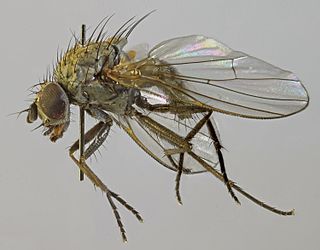
Azelia cilipes is a species of fly in the family Muscidae. It is found in the Palearctic.

Azelia is a genus of flies belonging to the family Muscidae.
